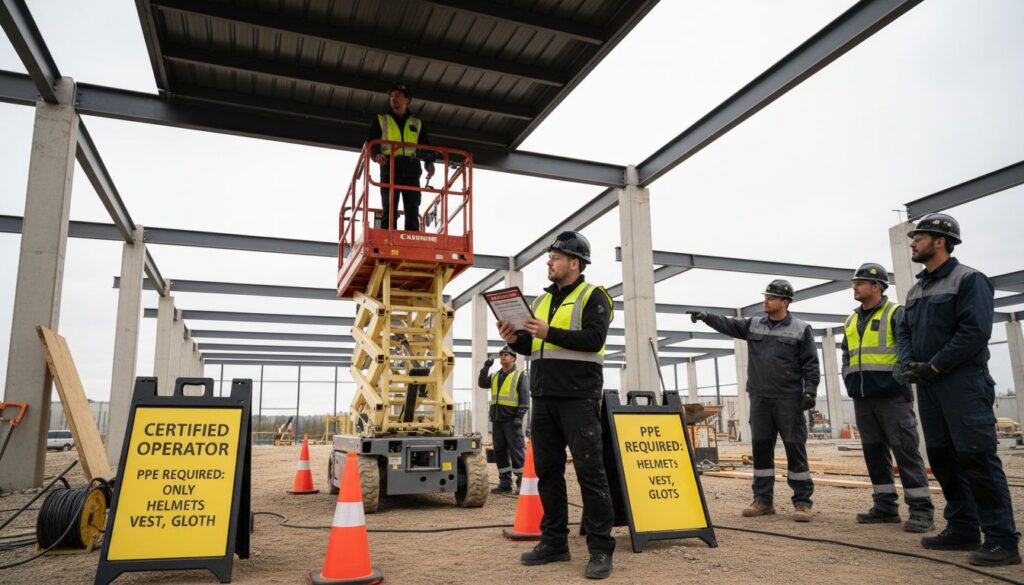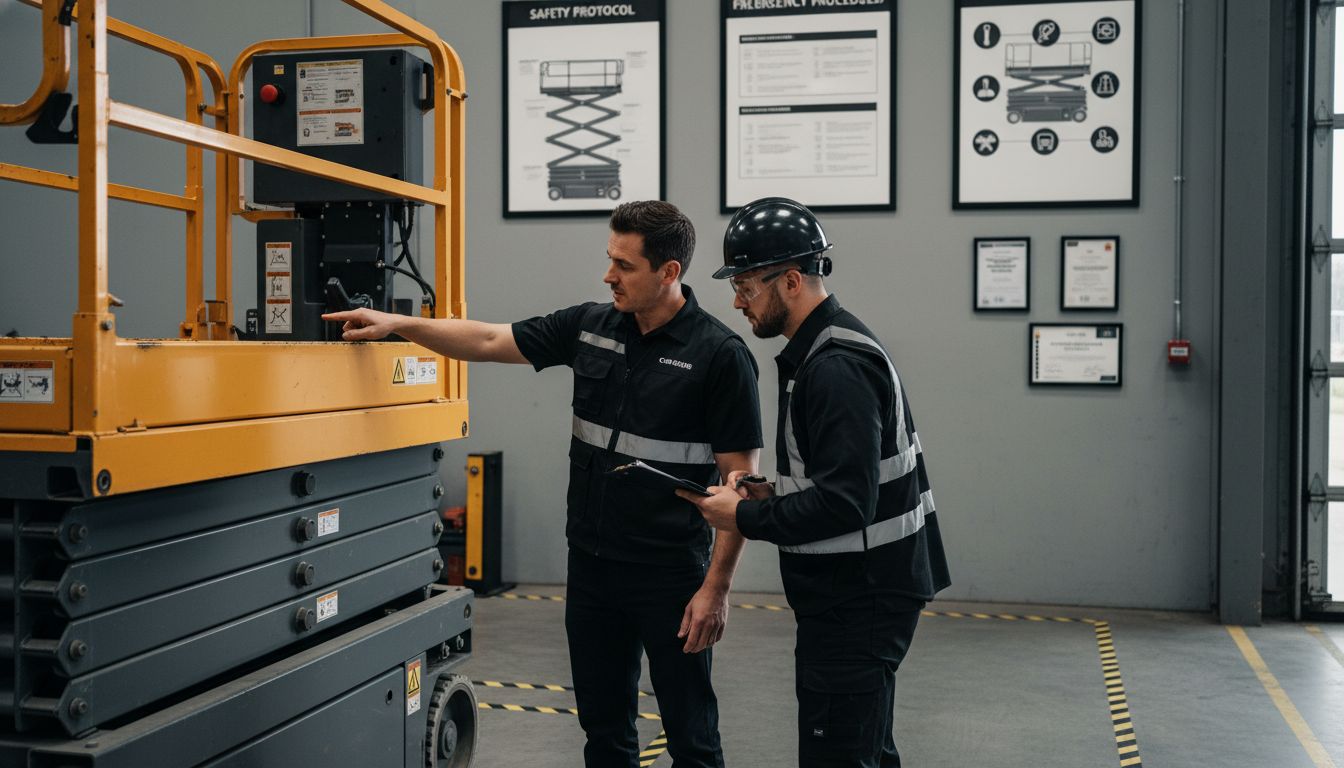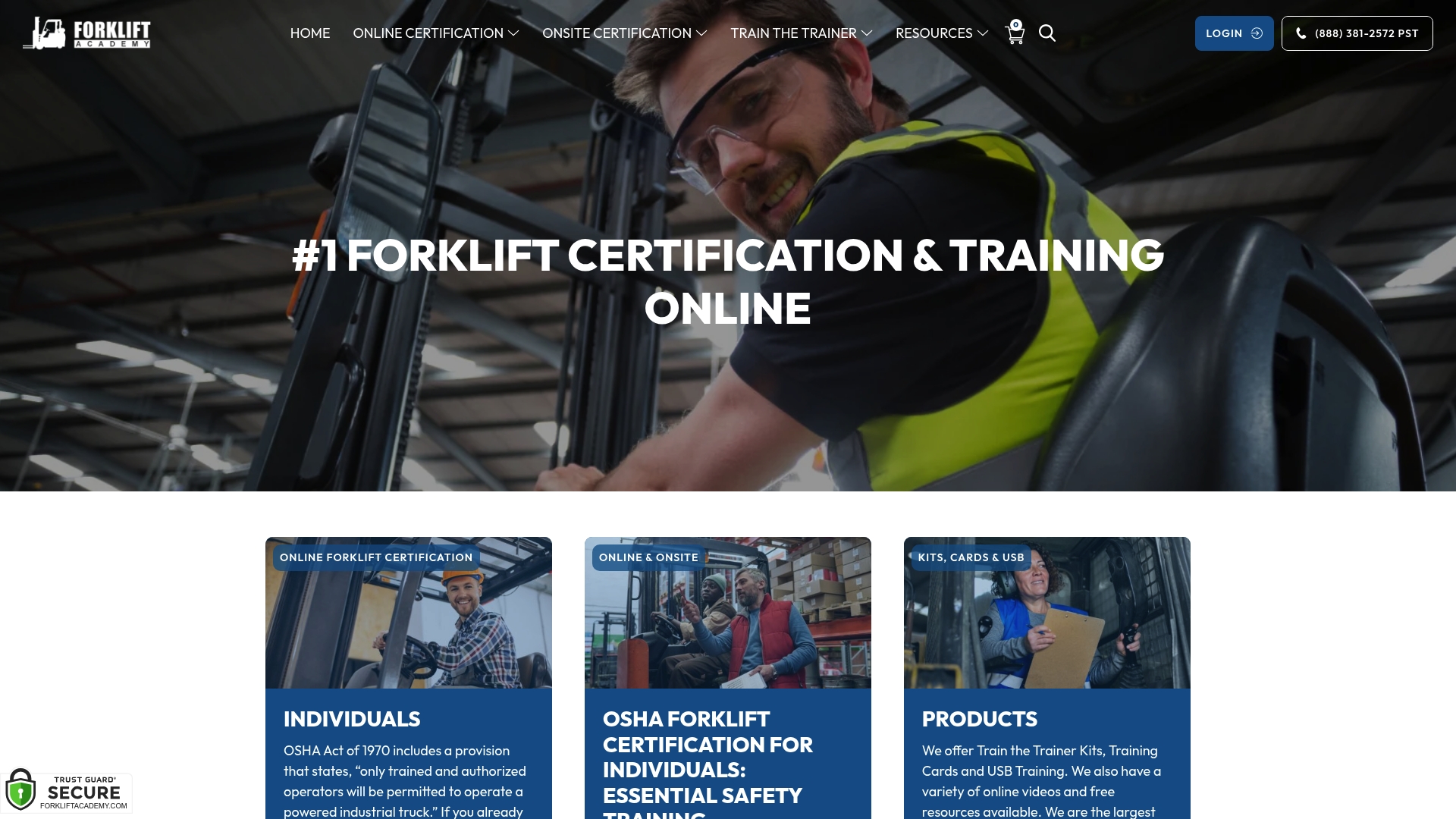
Around 30 percent of serious injuries on construction sites involve aerial lifts like scissor lifts, highlighting a critical safety challenge for employers and workers. Scissor lifts are essential for countless tasks in construction, maintenance, and industry, but using them safely requires more than basic know-how. Proper certification goes beyond a standard credential to protect lives, reduce accident risks, and keep companies within legal boundaries.
| Point | Details |
|---|---|
| Certification Importance | Scissor lift certification ensures operator safety and regulatory compliance, significantly reducing workplace accidents. |
| Types of Certifications | Various certifications exist, including 3A and 3B, each tailored for different operational environments and equipment models. |
| Legal Requirements | Employers must provide comprehensive training, including formal instruction and practical evaluation, to avoid legal and financial repercussions. |
| Career Benefits | Certification enhances job marketability, increases earning potential, and establishes a professional commitment to safety. |
A scissor lift certification represents a specialized training process designed to ensure workplace safety and regulatory compliance for operators working with vertical mobile platforms. According to e-architect.com, these certifications train professionals to safely maneuver and operate scissor lifts, which are critical pieces of equipment used in construction, maintenance, and industrial settings.
The core purpose of scissor lift certification extends beyond simple skill acquisition. As National OSHA Foundation research indicates, the certification process comprehensively evaluates an operator’s ability to understand and mitigate potential workplace hazards. Certification training typically covers critical areas such as:

Certification isn’t just a bureaucratic requirement—it’s a critical safety intervention. By mandating structured training, employers can significantly reduce workplace accidents, protect worker safety, and demonstrate compliance with regulatory standards. Operators who complete these programs gain not just a credential, but a deep understanding of how to interact safely with complex mechanical equipment in dynamic work environments.
Scissor lift certifications encompass various specialized training programs designed to address different equipment types and operational environments. According to Tamkene Training Courses, these certifications cover multiple scissor lift models, including electric, rough-terrain, slab, and slab-stock configurations, ensuring operators receive targeted training matching specific workplace needs.
The International Powered Access Federation (IPAF) provides globally recognized certification categories that help standardize operator training. As IPAF research indicates, their certification framework includes distinct classifications:
Beyond standard classifications, scissor lift certifications can vary based on factors like equipment complexity, operational environment, and specific workplace requirements. Employers often seek certifications that not only meet regulatory standards but also provide comprehensive safety training tailored to their unique operational contexts. By investing in these specialized certification programs, companies can significantly reduce workplace accidents and enhance overall operational efficiency.
Here’s a summary of major scissor lift certification types and their primary focus:
| Certification Type | Focus Area | Typical Application |
|---|---|---|
| 3A Certification | Scissor lift operation | Construction Maintenance Warehousing |
| 3B Certification | Boom lift operation | High-reach tasks Outdoor projects |
| Industry-Specific | Customized safety training | Industrial plants Specialty worksites |
| Electric/Rough-Terrain | Equipment model training | Indoor jobs Uneven terrain |
For professionals looking to expand their skills, understanding what is scissor lift certification provides deeper insights into the comprehensive training landscape and its critical role in workplace safety.
OSHA has established comprehensive legal requirements for scissor lift operator certification that go far beyond simple procedural guidelines. According to the National OSHA Foundation, the training process must include three critical components: formal instruction, practical training, and comprehensive performance evaluation to ensure operator competence and workplace safety.
The legal framework for scissor lift training mandates that employers take full responsibility for operator education. As OSHA Education Center research indicates, employers must provide structured training that covers multiple essential areas:
Non-compliance with these regulations can result in significant legal and financial consequences for businesses. Employers who fail to provide adequate training may face substantial fines, potential legal liability in case of workplace accidents, and potential suspension of operational permits. The legal requirements are designed not just as bureaucratic checkboxes, but as critical interventions to prevent workplace injuries and protect worker safety.
For businesses seeking to navigate these complex regulatory landscapes, understanding OSHA standards for scissor lifts provides an essential roadmap to comprehensive compliance and operational safety.
Certification in scissor lift operation opens up a world of professional opportunities across multiple industries. According to ISM Training, obtaining this specialized certification dramatically enhances an operator’s skill set, making them more attractive to employers in construction, maintenance, warehousing, and industrial sectors.
The career advantages of scissor lift certification extend far beyond simple employability. As National OSHA Foundation research indicates, certified operators contribute significantly to workplace safety and operational efficiency. Key professional benefits include:
Beyond individual career growth, certified scissor lift operators play a critical role in creating safer, more productive work environments. Employers actively seek professionals who demonstrate not just technical skill, but a comprehensive understanding of safety protocols and equipment management. This certification serves as a powerful testament to an operator’s commitment to professional excellence and workplace safety, effectively transforming a technical skill into a valuable career asset.
For professionals looking to maximize their career potential, understanding what is scissor lift certification provides crucial insights into leveraging this professional credential for long-term success.
The landscape of scissor lift operation is fraught with potential legal and financial risks for organizations that neglect proper certification and training protocols. According to the National OSHA Foundation, failure to comply with training requirements can result in substantial financial penalties that extend far beyond simple regulatory fines.
The liability spectrum for non-compliant organizations is comprehensive and potentially devastating. As OSHA Education Center research indicates, organizations face multiple layers of potential legal exposure:
Beyond immediate financial consequences, non-compliance can trigger long-term reputational damage that extends well beyond the immediate incident. Companies found negligent in safety training may find themselves blacklisted by insurance providers, lose critical government contracts, and suffer significant brand reputation erosion. The potential costs of non-compliance far outweigh the investment required for comprehensive scissor lift operator certification and training.
To navigate these complex regulatory waters, businesses should understand OSHA standards for scissor lifts and develop a proactive approach to workplace safety and legal compliance.
Operating scissor lifts without proper certification exposes your business to costly risks and unsafe work environments. If you recognize the importance of OSHA-compliant training covered in the article, you understand how critical thorough operator education is to prevent accidents and regulatory penalties. Scissor lift operators need expert guidance on equipment inspection, hazard recognition, and safety procedures to build confidence and competence on site.

Take control of workplace safety today by exploring the Forklift Certification Archives – Top Osha Forklift Certification for tailored scissor lift training programs. With over 20 years of industry experience, Forkliftacademy.com delivers comprehensive online and onsite certification options designed to meet OSHA standards and protect your employees. Visit Forkliftacademy.com now and secure the right training resources to enhance your team’s skills and reduce liability risks immediately.
Scissor lift certification is a specialized training process that ensures operators are knowledgeable about safely maneuvering and operating scissor lifts in various workplace settings, thus enhancing safety and regulatory compliance.
Certification is crucial as it provides operators with the skills to recognize and mitigate potential hazards, thereby significantly reducing workplace accidents and ensuring compliance with safety regulations.
There are several types of scissor lift certifications, including 3A Certification for standard scissor lifts, 3B Certification for boom lifts, and industry-specific certifications tailored for various sectors like construction and maintenance.
OSHA mandates that scissor lift training must include formal instruction, practical training, and a performance evaluation to ensure operators are competent, with employers being responsible for providing this training to their employees.